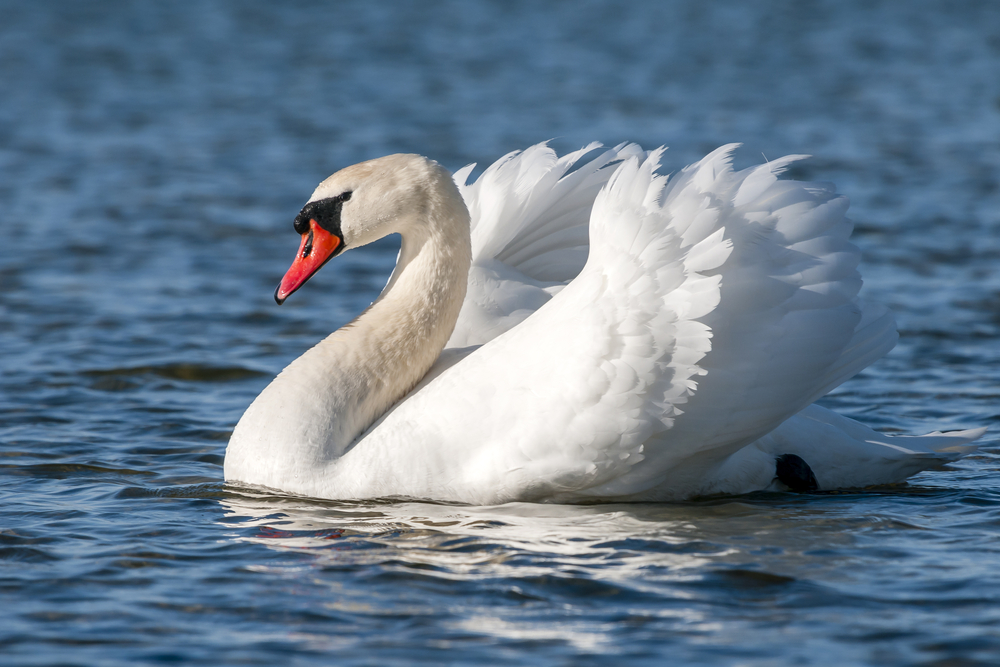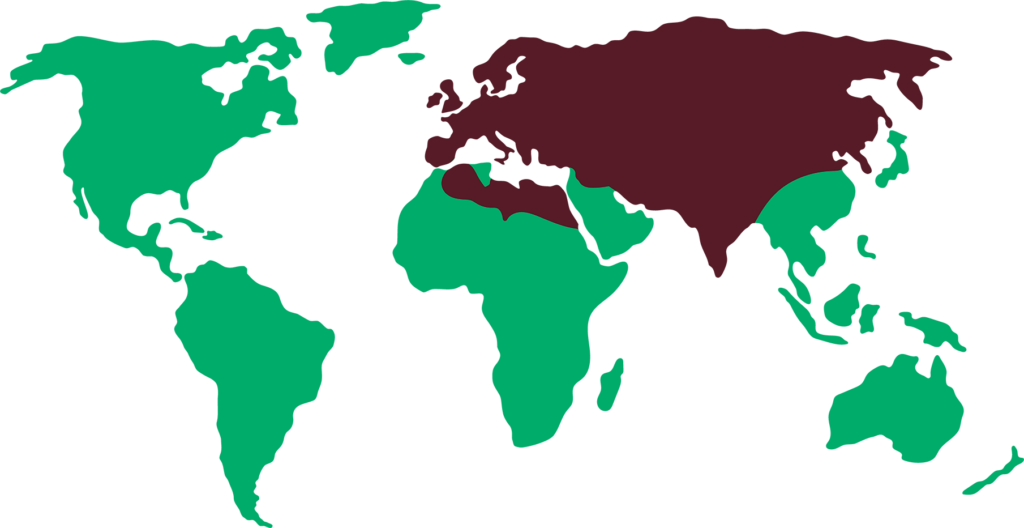Mute swan
Cygnus olor

length

160 cm
weight

10 kg
Lifespan

30 years
The mute swan is one of the largest waterbirds in the world. Males are slightly larger than females, measuring 140-160 cm in length and with a wingspan of around 2.40 metres.
General characteristics
At birth they are dark grey or brown, as is the bill, but as they grow, their plumage becomes pure white with some black flight feathers on the wings. Adults have a black spot at the base of the bill which is reddish-orange.
They have a long, elegant neck, which gives them a majestic appearance. The triangular-shaped head is small compared to the body.
The legs are black with webbed nails. They are set well back from the body, which allows them to swim easily.
The swan’s wings are long and strong, allowing them to fly long distances and reach high speeds. They can fly at speeds of up to 80km/h and at altitudes of up to 3,000 metres.
They moult their feathers once a year, usually in the summer. During this time, they may look a little scruffy or less elegant than usual.
Feeding
It is a herbivorous bird that feeds mainly on aquatic plants, grasses and seeds that have fallen into the water.
Behaviour
White swans are socials and monogamous. They usually gather in pairs or family groups for most time of the year.
They are very protective animals and can aggressively defend their territory against other animals, including humans. If they feel threatened, they may attack with their wings and beak and can inflict serious injuries on any predator or intruder considered as a threat.
They may be migratory or sedentary depending on the area in which they live. In northern parts of Europe, Asia and North America, they migrate to the south in winter in search of open water and food. In other parts of the world where the climate is milder, mute swans are usually resident all year round.
They are called mute swans because they can go for a long time without making a sound, but they can make a variety of sounds, such as whistles and grunts, to communicate with each other or to alert other animals of their presence. They also communicate through visual signals or physical contact.
Reproduction
During the mating season, which usually takes place in late winter or early spring, pairs perform a complex courtship called the “swan dance”, which involves trumpeting sounds and graceful movements of the head, neck and wings.
Once the pair is established, the male and female begin to build the nest together. The nest is usually made of aquatic plants and grasses, and is built near water.
The female will lay between 3 and 8 eggs, which are incubated for 5 weeks until the chicks hatch. During this time, the parents are very protective of the nest and can be very aggressive if they feel threatened.
Parents will continue to feed and protect the chicks until they reach independence at 4-5 months of age.
Threats
The loss of natural habitat, water pollution, hunting and the introduction of invasive species are some of their main threats.
Distribution
They can be found naturally in Europe, Asia and the Middle East, but have also been introduced to other parts of the world.
Their preferred habitat is freshwater areas with vegetation and shallow water, such as rivers, lakes, ponds and wetlands.

Did you know?
In England, all swans belonged to the Crown and the beaks had a property mark.
Swans grieve for the lost of their partner or chick and will go through a mourning process.
They can sleep with one eye open, to remain alert to any threat.
Conservation status
